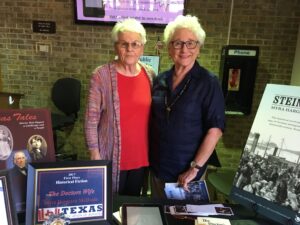Three Spanish galleons, caught in a storm in the Gulf of Mexico, wrecked on the sandbars just off Padre Island on April 29, 1554. Ironically, as the flotilla sailed from Veracruz, a Dominican missionary on his way for an audience with the Pope, shared his sinister forebodings: “Woe be to those who are going to Spain. Neither we nor the fleet will ever arrive there. Most of us will perish before then, and those who survive will endure intolerable hardships, which will cause the deaths of most of them.”


Four vessels began the journey loaded with about 400 people—old conquistadores and Spanish families heading for home, merchants whose wealth was stored in the ships’ holds, and soldiers eager to see their homeland—plus bars of gold and silver bullion, and chests of freshly minted coins. Twenty days into the Gulf of Mexico, a vicious storm hit with such force that the ships fought to stay afloat. One vessel, the San Andrés, which was severely damaged, limped into port at Havana. The other three, the San Esteban, the Espíritu Santo, and the Santa María Yciar carrying about 300 passengers, tossed without control until all three ships sank within two and a half miles of each other about a half-mile from the coast. Over half of the passengers, grabbing anything they could find to save themselves, drowned before reaching shore. Only the San Esteban remained visible above the waves. The ship’s master and probably the most skilled sailors rescued one of the small boats and left for Veracruz to seek help. Other survivors salvaged food and supplies. Believing a Spanish outpost lay within a few days march, they began walking, unaware that it was 300 miles to Tampico. Only one man, Francisco Vasquez, elected to remain with the wreckage and wait for rescue.
The group met local Indians and accepted the natives’ offer of food, only to be attacked when they reached the campsite. As the Spaniards fled, some of them stripped off their clothing thinking that’s what the Indians wanted. The Indians continued the chase, killing the terrified survivors as they ran and inflicting others with arrows including Fray Marcos de Mena who took seven arrows. His companions, thinking he would soon die, buried him with only his head exposed hoping to protect his body from wild animals. The warmth of the sand apparently revived Fray Marcos, and he dug his way out. As he continued walking, he came upon the ultimate horror—all his companions lay dead. Fighting mosquitos, hunger, and thirst, he pushed on, finally coming to a river only to discover that it was salty. Two Indians found him, gave him food and water, and as they carried him on a bed of hay, they kept saying only one word, “Tampico.” The village lay only a short distance away.
When Fray Marcos’ report of the wreckage verified the account of the survivors who had returned earlier on the boat, the viceroy ordered a salvage expedition to retrieve some of the most valuable cargoes ever to leave the New World. Six salvage ships reached the site in July 1554 and found the emaciated and joyful Francisco Vasquez and the partially exposed San Esteban. Divers retrieved almost 36,000 pounds of treasure, about forty-one percent of the original cargo.
Four hundred years later, in 1967 the Texas General Land Office received information that an out-of-state salvage crew recovered artifacts off Padre Island near Port Mansfield inside the 10.35-mile coastal boundary that belonged to the state of Texas. The company doing the

recovering was not licensed to operate in Texas, and after several years of lawsuits Texas recovered all the artifacts and the salvage company was awarded over $300,000.

The thousands of treasures, encrusted with centuries of hard calcium carbonate deposits, included a small solid-gold crucifix, a gold bar, several silver discs, cannons, and crossbows. The most valuable find was three astrolabes, extremely rare navigational instruments used in the sixteenth century. The Texas Legislature passed an Antiquities Bill in 1969, which protects and preserves archeological landmarks and resources and sets strict limits on salvaging and excavation by individuals and companies. Although the Santa María had been destroyed in the 1950s during the dredging of the Port Mansfield Channel, excavations in the 1973-74 season, used more advanced techniques to probe the layers of sand and shell to reach the treasures lying in a thick deposit of clay. Over 26,000 pounds of encrusted artifacts were recovered, including a large enough fragment of one ship to estimate the length of the vessel between seventy and ninety-seven feet. After the materials were processed and cataloged, the Corpus Christi Museum of Science and History was named repository of the collection.
